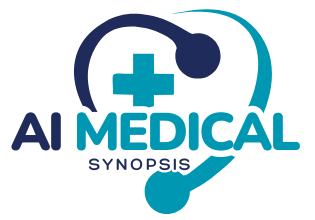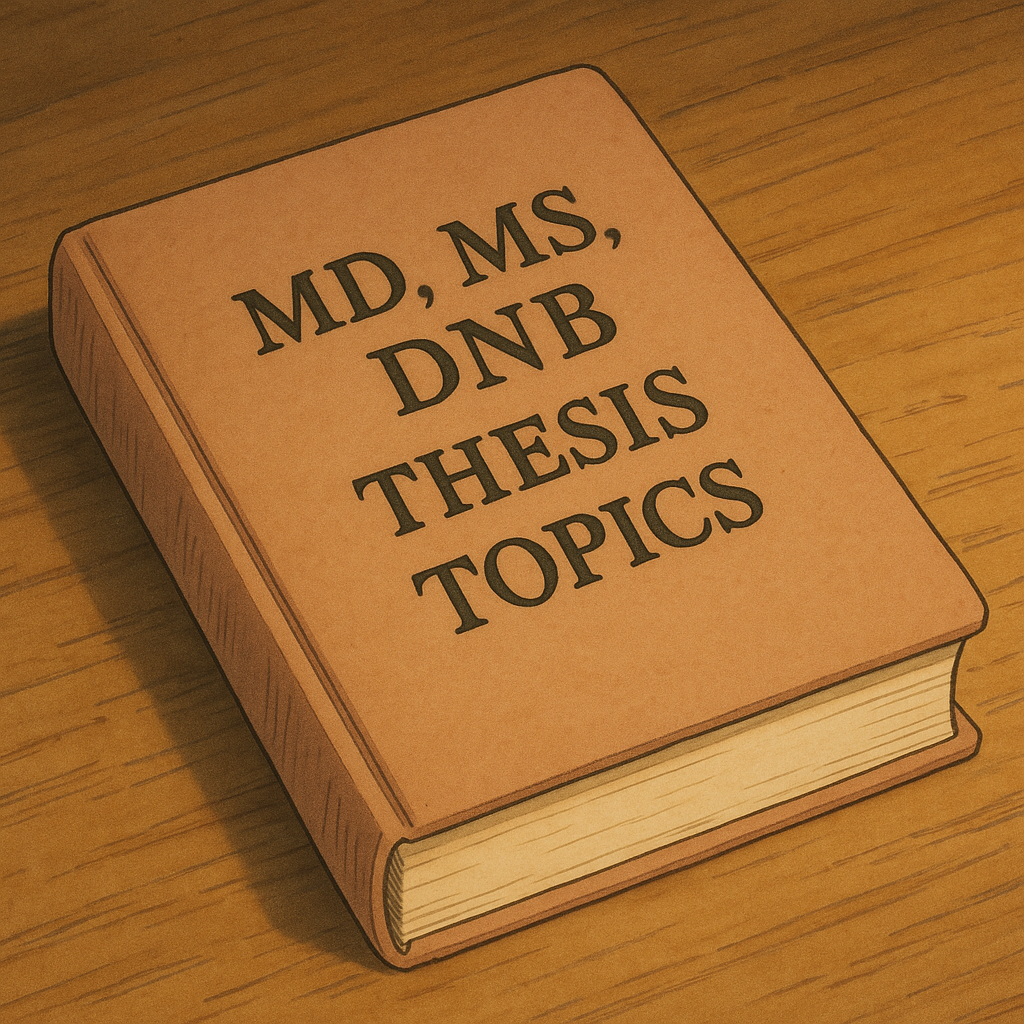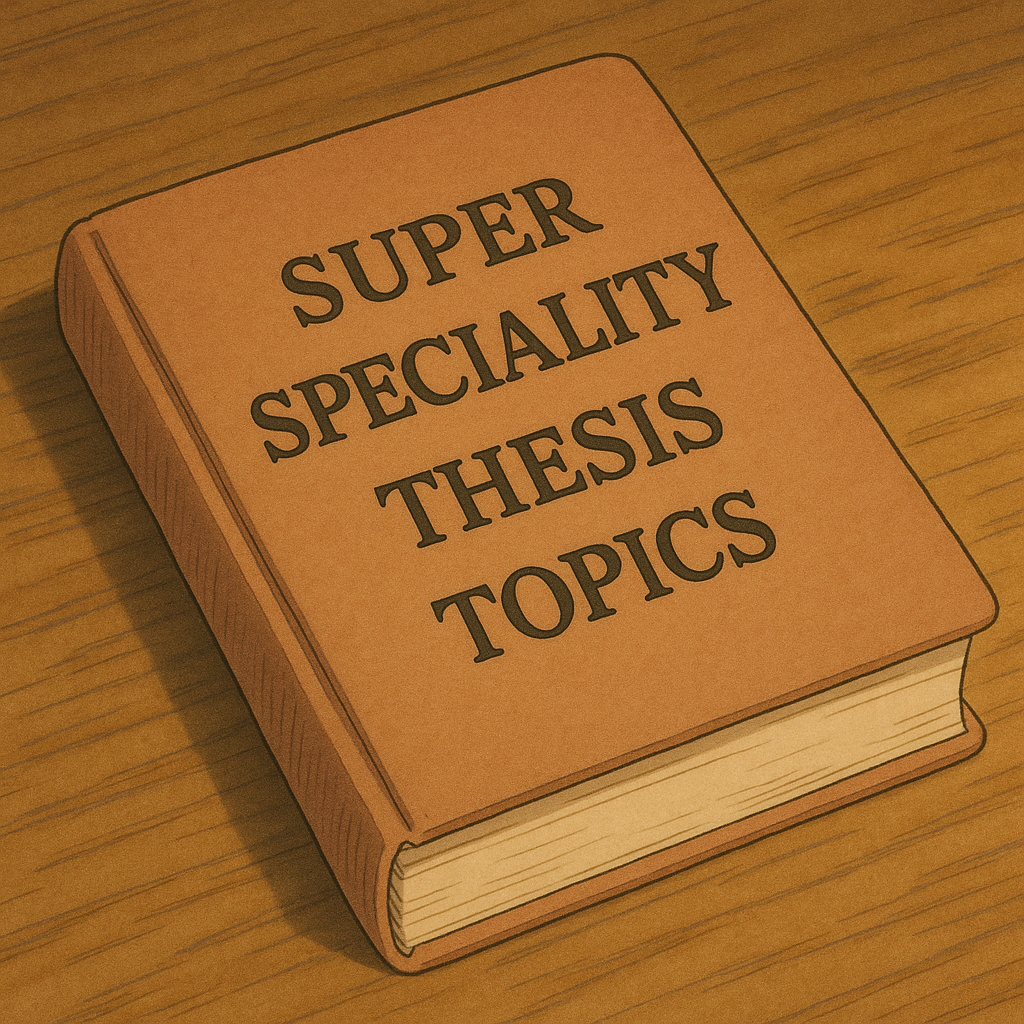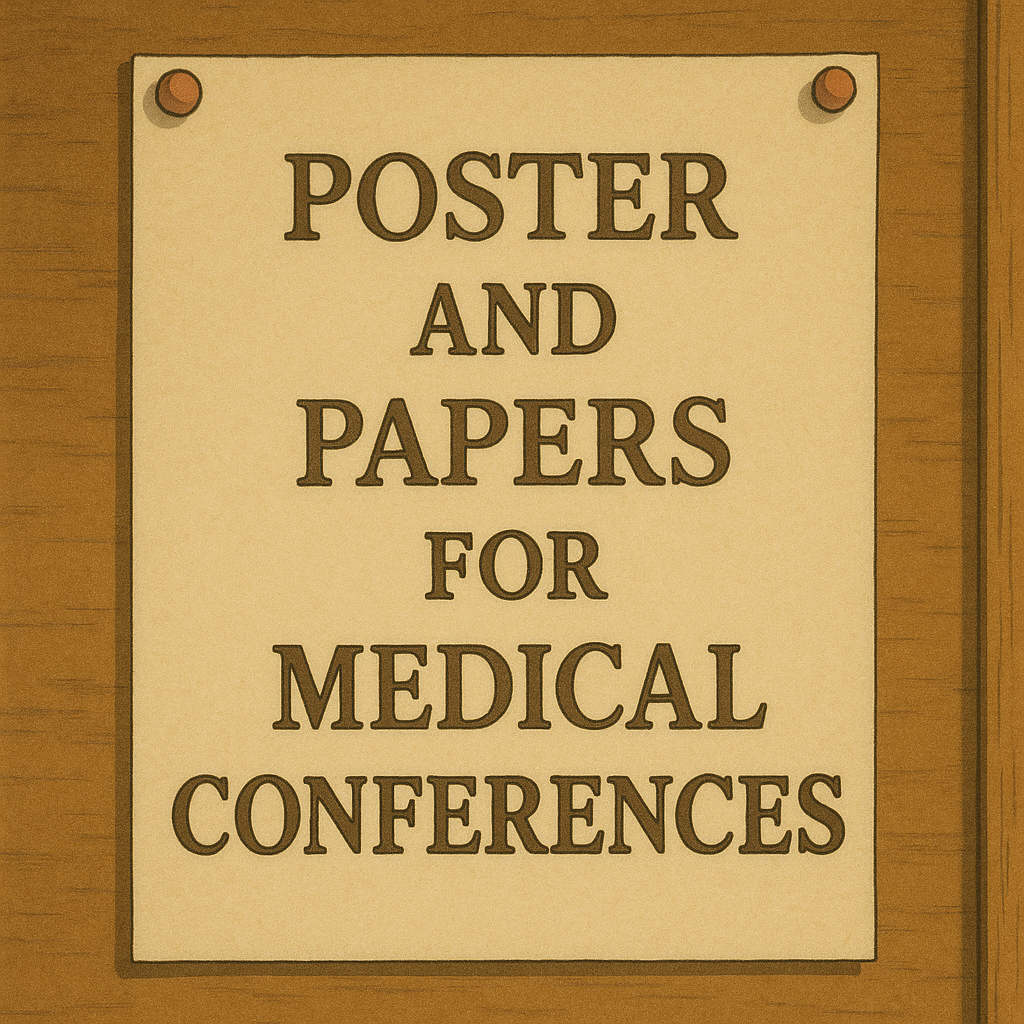ENT THESIS TOPICS
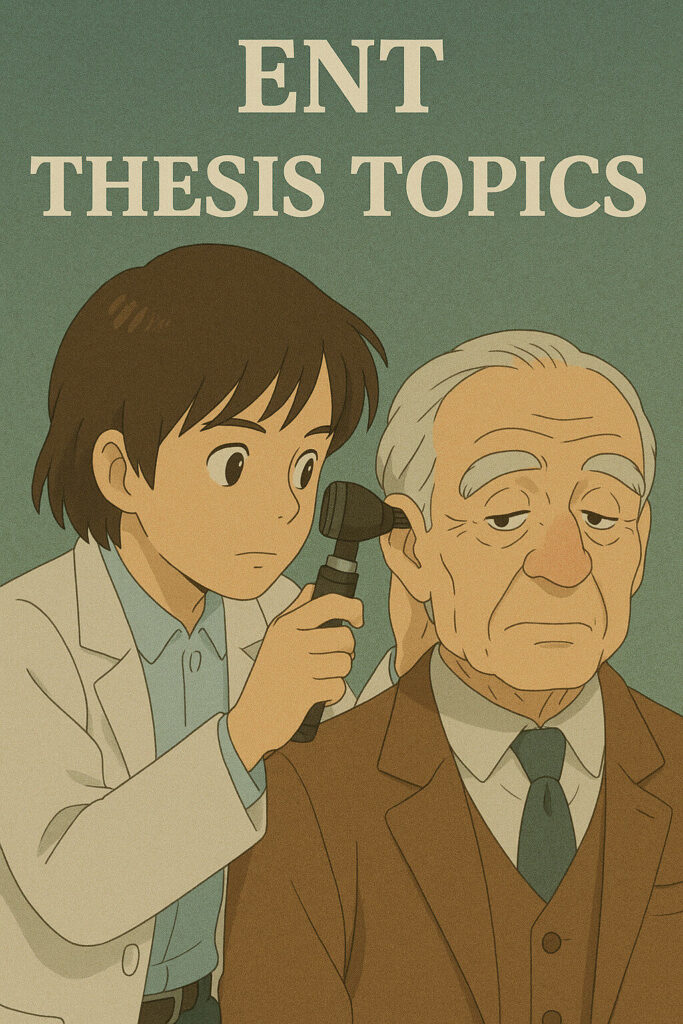
ENT THESIS TOPICS
Selecting the right ENT thesis topics is essential for producing research that significantly contributes to the field of otolaryngology. Focused ENT thesis topics span a wide range of subspecialties including otology, rhinology, laryngology, head and neck surgery, audiology, sleep apnea, and facial plastic surgery. These areas provide abundant opportunities for detailed clinical and surgical research. Well-chosen ENT thesis topics ensure relevance to current medical challenges and can lead to findings that enhance patient care and treatment techniques. ‘
Moreover, a strong thesis based on cutting-edge ENT thesis topics can be transformed into a publication in reputed medical journals, a necessary criterion for academic advancement and promotions in medical institutions. Thus, choosing impactful ENT thesis topics not only enriches academic knowledge but also plays a vital role in career progression and professional recognition.
1. Otology & Vestibular Disorders
A prospective randomized controlled trial of intratympanic dexamethasone versus oral corticosteroids in idiopathic sudden sensorineural hearing loss: audiometric and speech discrimination outcomes
A cross-sectional observational study of distortion-product otoacoustic emissions normative values in different age cohorts for early detection of cochlear dysfunction
A retrospective cohort analysis of hearing preservation rates following cochlear implantation in patients with residual low-frequency hearing
An in vitro cytotoxicity and functional assay of novel aminoglycoside analogs on organ of Corti explant cultures: ototoxicity profiling
A case-control evaluation of serum oxidative stress markers and antioxidant levels in chronic noise-induced hearing loss versus matched controls
A methodological validation of video head impulse test (vHIT) versus caloric testing for vestibular hypofunction diagnosis
A systematic review and meta-analysis of endoscopic versus microscopic stapedotomy techniques on hearing outcomes in otosclerosis
An in silico molecular docking study of heat shock protein 70 modulators as potential therapeutics in noise-induced cochlear injury
A pilot observational study of vestibular rehabilitation efficacy using virtual-reality–based balance training in unilateral vestibular hypofunction
A narrative review of genetic mutations associated with Meniere’s disease and implications for targeted therapies
2. Rhinology & Paranasal Sinus Disorders
A prospective cohort study of quality-of-life improvements following endoscopic sinus surgery versus functional medical therapy in chronic rhinosinusitis with nasal polyps
A cross-sectional analytical study of sinonasal microbiome diversity in allergic versus non-allergic chronic rhinosinusitis using 16S rRNA sequencing
A randomized double-blind trial of budesonide nasal irrigations versus once-daily mometasone spray for postoperative care in sinonasal polyposis
A retrospective cohort evaluation of balloon sinuplasty efficacy and revision rates compared to traditional uncinectomy in office-based settings
An in vitro mucociliary clearance assay of novel mucoactive agents on human sinonasal epithelial cell cultures
A case-control study of S100A7 and eotaxin-1 cytokine levels in tissue biopsies from eosinophilic versus non-eosinophilic chronic rhinosinusitis
A methodological validation of acoustic rhinometry versus rhinomanometry for objective assessment of nasal obstruction
A systematic review and meta-analysis of perioperative systemic corticosteroid protocols on revision rates in chronic rhinosinusitis surgery
An in silico finite-element modeling of airflow patterns in septal deviation correction and its impact on nasal resistance
A narrative review of emerging biologic therapies targeting IL-5 and IL-4/IL-13 pathways in nasal polyposis
3. Laryngology & Voice Disorders
A prospective randomized trial of voice therapy plus proton pump inhibitor versus voice therapy alone in laryngopharyngeal reflux–related dysphonia: acoustic and perceptual outcomes
A cross-sectional study of vocal fold biomechanics using high-speed digital kymography in professional singers versus non-singer controls
A retrospective cohort analysis of transoral CO₂ laser microsurgery versus open partial laryngectomy for T1 glottic carcinoma: voice and oncologic outcomes
An in vitro ex vivo phonation model evaluating the efficacy of novel injectable biomaterials for vocal fold medialization
A case-control evaluation of serum pepsin levels in induced sputum as a biomarker for reflux-related chronic laryngitis
A methodological validation of laryngeal electromyography electrode placement techniques for neurolaryngologic assessment
A systematic review and meta-analysis of hyaluronic acid versus autologous fat injection for vocal fold augmentation in unilateral vocal fold paralysis
An in silico computational model of vocal fold vibration changes with varying scar tissue stiffness for predictive surgical planning
A pilot clinical trial of platelet‐rich plasma injection in vocal fold scar: viscoelastic and phonatory parameter assessment
A narrative review of regenerative medicine approaches in voice restoration: stem cells and tissue engineering strategies
4. Head & Neck Oncology
A prospective cohort study of preoperative PET-CT versus MRI for detection of cervical lymph node metastasis in oral squamous cell carcinoma
A cross-sectional immunohistochemical analysis of PD-L1 expression and tumor-infiltrating lymphocytes in HPV-positive versus HPV-negative oropharyngeal cancers
A randomized controlled trial of neoadjuvant chemotherapy plus surgery versus surgery alone in locally advanced laryngeal carcinoma: survival and functional outcomes
A retrospective evaluation of transoral robotic surgery versus conventional transoral approach in early-stage oropharyngeal cancer: margin status and swallowing function
An in vitro chemosensitivity assay of patient-derived head and neck cancer organoids to cisplatin and targeted agents
A case-control study of circulating tumor DNA levels as a prognostic biomarker in recurrent thyroid carcinoma
A methodological validation of narrow-band imaging endoscopy for margin delineation in oral cavity tumors
A systematic review and meta-analysis of immunotherapy agents (PD-1/PD-L1 inhibitors) efficacy in recurrent/metastatic head and neck cancers
An in silico network pharmacology study of multi-targeted small molecules in head and neck squamous cell carcinoma pathways
A narrative review of advances in precision radiotherapy techniques (IMRT, proton therapy) for head and neck malignancies
5. Pediatric ENT
A prospective cohort study of hearing and language outcomes following bilateral versus unilateral grommet insertion in otitis media with effusion
A cross-sectional screening program evaluation of congenital sensorineural hearing loss in neonates using automated ABR versus OAE
A randomized controlled trial of intranasal steroids versus saline irrigation for adenoid hypertrophy–related nasal obstruction in children
A retrospective cohort analysis of airway complications and outcomes in pediatric adenotonsillectomy using cold-steel versus coblation techniques
An in vitro histological comparison of mucociliary clearance in pediatric versus adult adenoid tissues
A case-control evaluation of systemic allergy profiles in recurrent acute otitis media versus controls using serum IgE and nasal provocation tests
A methodological validation of pediatric sleep endoscopy for dynamic airway obstruction assessment in sleep-disordered breathing
A systematic review of craniofacial growth outcomes following early cleft palate repair versus delayed repair
A pilot observational study of nasal nitric oxide levels in primary ciliary dyskinesia diagnosis in infants
A narrative review of emerging non-surgical interventions for laryngomalacia in neonates
6. Sleep Medicine & Sleep-Disordered Breathing
A prospective randomized trial of CPAP versus mandibular advancement device therapy on blood pressure and endothelial function in obstructive sleep apnea
A cross-sectional polysomnography study correlating upper airway collapsibility metrics with BMI and neck circumference in snoresnoring individuals
A retrospective cohort analysis of perioperative complications in bariatric surgery patients with untreated versus treated sleep apnea
An in vitro bench model evaluation of airflow dynamics in adjustable oral appliance designs for OSA management
A case-control study of serum adiponectin and leptin levels in OSA patients versus matched controls
A methodological validation of home sleep apnea testing devices compared to in-lab polysomnography
A systematic review and meta-analysis of positional therapy effectiveness in mild obstructive sleep apnea
An in silico computational fluid dynamics analysis of upper airway airflow in varying degrees of soft palate collapse
A pilot clinical trial of upper airway stimulation device implantation on sleep architecture and daytime sleepiness
A narrative review of neuromodulation techniques for central sleep apnea syndromes
7. Allergy, Immunology & Sinonasal Immunotherapy
A randomized controlled trial of subcutaneous versus sublingual immunotherapy in patients with perennial allergic rhinitis: symptom scores and immunoglobulin changes
A cross-sectional evaluation of tissue eosinophil and mast cell counts in allergic versus non-allergic chronic rhinosinusitis
A prospective cohort study of perioperative systemic corticosteroid protocols on postoperative outcomes in sinus surgery for allergic fungal rhinosinusitis
A retrospective analysis of adverse reactions and efficacy in cluster versus conventional allergen immunotherapy schedules
An in vitro basophil activation test validation for peanut allergy diagnosis in atopic individuals
A case-control study of periostin and IL-33 levels in nasal secretions of aspirin-exacerbated respiratory disease patients
A methodological validation of nasal provocation test protocols for house dust mite allergy
A systematic review of biologic agents (anti-IgE, anti-IL-5) in the treatment of severe allergic rhinitis and nasal polyposis
An in silico epitope mapping of Der p 1 and Der p 2 allergens for development of hypoallergenic immunotherapy vaccines
A narrative review of the united airway concept and integrated management approaches for comorbid allergic rhinitis and asthma
8. Facial Plastic & Reconstructive Surgery
A prospective randomized trial of autologous fat grafting versus hyaluronic acid fillers for midface rejuvenation: volumetric retention and patient satisfaction
A cross-sectional analysis of facial nerve branch anatomy variability using high-resolution ultrasound for preoperative planning in parotid surgery
A retrospective cohort evaluation of outcomes and complications in external versus endoscopic brow lift procedures
An in vitro histological assessment of scaffold-based tissue-engineered cartilage constructs for nasal dorsum reconstruction
A case-control study of functional and aesthetic outcomes in unilateral microtia reconstruction using costal cartilage versus porous polyethylene implants
A methodological validation of 3D stereophotogrammetry for objective assessment of postoperative facial contour changes
A systematic review and meta-analysis of distraction osteogenesis versus orthognathic surgery in midface hypoplasia
An in silico finite-element analysis of implant stress distribution in orbital floor fracture reconstruction
A pilot clinical trial of platelet-rich fibrin membranes to enhance wound healing in facial recontouring surgeries
A narrative review of advances in minimally invasive facial aesthetic procedures: threads, lasers, and energy-based devices
9. Thyroid & Salivary Gland Disorders
A prospective cohort study of fine-needle aspiration cytology accuracy versus molecular testing in indeterminate thyroid nodules: malignancy risk assessment
A cross-sectional evaluation of salivary gland scintigraphy uptake ratios in Sjögren’s syndrome versus healthy controls
A randomized controlled trial of radiofrequency ablation versus ethanol injection for benign thyroid cyst treatment: volume reduction and symptom relief
A retrospective cohort analysis of complication rates and recurrence following superficial parotidectomy versus total conservative parotidectomy for benign tumors
An in vitro histopathological assessment of acinar cell function in cultured salivary gland explants exposed to radiation doses
A case-control study of serum Tg and anti-Tg antibody levels in papillary thyroid carcinoma recurrence versus remission
A methodological validation of ultrasound elastography thresholds for differentiation of benign and malignant salivary gland lesions
A systematic review of minimally invasive techniques (TAVI, MWA) in the management of thyroid nodules
An in silico computational modeling study of thermal profiles during ultrasound-guided laser ablation of thyroid tissue
A narrative review of molecular markers for early detection and targeted therapy in salivary gland malignancies
10. Recent Advances in ENT
A scoping review of artificial intelligence–assisted endoscopic image analysis for real-time detection of sinonasal neoplasms
A prospective pilot study of gene therapy using adenoviral vectors for auditory hair cell regeneration in sensorineural hearing loss
A methodological assessment of organ-on-a-chip models replicating the human middle ear for infection and drug testing
An in vitro validation of nanocarrier-based topical formulations for enhanced trans-tympanic drug delivery in otitis media
An in silico systems biology network analysis of chronic rhinosinusitis inflammatory pathways for novel target identification
A pilot clinical trial of photobiomodulation therapy for persistent olfactory dysfunction post–COVID-19 infection
A systematic review of 3D bioprinted airway grafts for laryngotracheal reconstruction: preclinical and early clinical data
An experimental study of wearable sensor integration in head-mounted endoscopy for ergonomic and imaging improvements
A retrospective data-mining analysis of electronic health record big data to predict postoperative complications in ENT surgeries
A narrative review of CRISPR-based antimicrobials for treatment-resistant otologic biofilm infections
